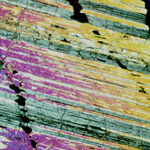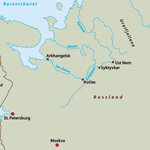Geology

50 million years ago the Indian sub-continent collided with the enormous Eurasian continent with a velocity of about 20 cm/year. With such a high velocity India was the fastest of the former parts of Gondwanaland, according to a report by a team of scientists from the GeoForschungsZentrum Potsdam (GFZ, Germany’s National Lab for Geosciences) and the National Geophysical Research Institute, India, in the 18th October 2007 edition of the Science Magazine "Nature".
Due to this collision at such high velocities the largest mountain belt on Earth, the Himalayas, was formed, as was the massive…

One of the most ambitious earth science expeditions yet mounted to gain a better understanding of the earthquake process, has begun off the coast of Japan, involving geologists from the universities of Southampton and Leicester.
Dr Lisa McNeill, of the University of Southampton's School of Ocean and Earth Science, based at the National Oceanography Centre, Southampton, and Joanne Tudge, of the Department of Geology, University of Leicester, are taking part in the multi-disciplinary study of a 'subduction' zone off the Japanese coast, aboard the deep-sea drilling vessel Chikyu (which means '…

If our planet did not have the ability to store oxygen in the deep reaches of its mantle there would probably be no life on its surface, according to scientists at the University of Bonn who have subjected the mineral majorite to close laboratory examination.
Majorite normally occurs only at a depth of several hundred kilometres under very high pressures and temperatures. The Bonn researchers have now succeeded in demonstrating that, under these conditions, the mineral stores oxygen and performs an important function as an oxygen reservoir. Near the earth's surface the structure breaks down…

What killed the wooly mammoths? Overhunting, climate change and disease lead the list of probable causes but a once-ridiculed theory is now being supported by an international team of scientists; namely that a comet or meteorite exploded over the planet roughly 12,900 years ago, causing the abrupt climate changes that led to the extinction of the wooly mammoth and other giant prehistoric beasts.
At the end of the Pleistocene era, wooly mammoths roamed North America along with a cast of fantastic creatures – giant sloths, saber-toothed cats, camels, lions, tapirs and the incredible teratorn…

A heat-sensitive camera flying on NASA's Mars Odyssey orbiter has led a team of Mars geologists to find seven small, deep holes on the flanks of Arsia Mons, a giant volcano on Mars. The holes may be openings, called skylights, in the ceilings of underground caves.
Very dark, nearly circular features ranging in diameter from about 100 to 250 meters (328 to 820 feet) puzzled researchers who found them in images taken by NASA's Mars Odyssey and Mars Global Surveyor orbiters. Using Mars Odyssey's infrared camera to check the daytime and nighttime temperatures of the circles, scientists concluded…

In 1911 the discovery that the earth was billions of years old changed our view of the world forever. At the end of the 19th century, many geologists still believed the age of the Earth to be a few thousand years old, as indicated by the Bible, while others considered it to be around 100 million years old, in line with calculations made by Lord Kelvin, the most prestigious physicist of his day.
Before radiometric dating there was no way of knowing.
In 1898 Marie Curie discovered the phenomenon of radioactivity and by 1904 Ernest Rutherford, a physicist working in Britain, realised that the…

During the last Ice Age, the ice dammed enormous lakes in Russia. The drainage system was reversed several times and the rivers flowed southwards. A group of geologists is now investigating what took place when the ice melted and the lakes released huge volumes of fresh water into the Arctic Ocean.
”The ice-dammed lakes in Russia were larger than the largest lakes we know today,” Eiliv Larsen, a geologist at the Geological Survey of Norway (NGU), tells me. He is in charge of the important SciencePub International Polar Year project that is studying natural climate changes in the Arctic and…

Throughout Earth's history, 90,000 out of every 100,000 years have been ice ages - and it's been 12,000 years since the last one. You can thank global warming, it seems.
Future ice ages may be delayed by up to 500,000 years by greenhouse gas emissions from fossil fuels, according to recent work by Dr Toby Tyrrell of the University of Southampton.
If their numerical model is accurate, this sets a new standard for detailing the disruption of long-term planetary processes by human activity.
Dr Tyrrell's team used a mathematical model to study what would happen to marine chemistry in a world…

Volcanoes sometimes get a bad rap for belching CO2 but today it turns out they're also responsible for the air we breathe.
National Science Foundation-funded research published this week in the journal Nature indicates that billions of years ago, when the Earth was home largely to undersea volcanoes, a previously unknown agent was removing the gas.
The researchers suggest that mixture of gases and lavas produced by submarine volcanoes scrubbed oxygen from the atmosphere and bound it into oxygen-containing minerals.
An artist's cross-section of an underwater volcano and the processes that…

The earth sciences rely on highly accurate timing to unravel past causes and effects, and understand the forces driving many events from ice ages to mass extinctions. Other scientific disciplines, such as evolutionary biology and climate science, in turn depend on accurate timing of geological processes to provide a baseline for their investigations.
While significant progress has been made over recent decades, great uncertainties remain that are inhibiting investigations of major past events and formative processes in the earth sciences. In the case of the dinosaur extinction, knowledge of…